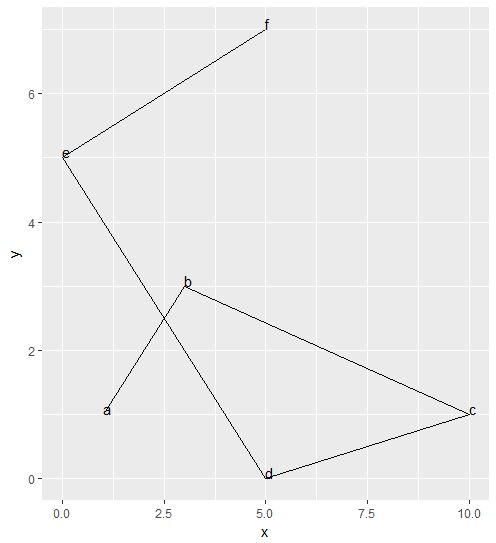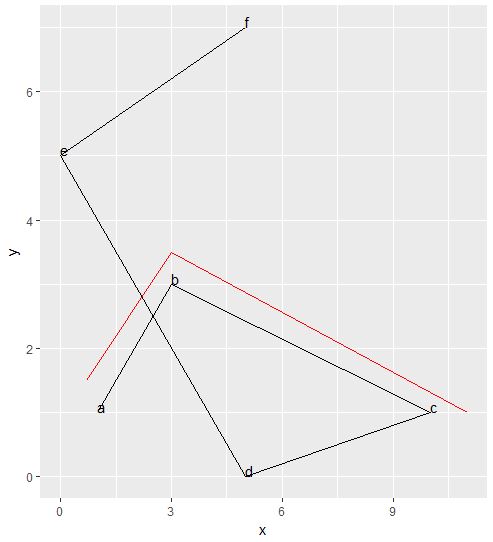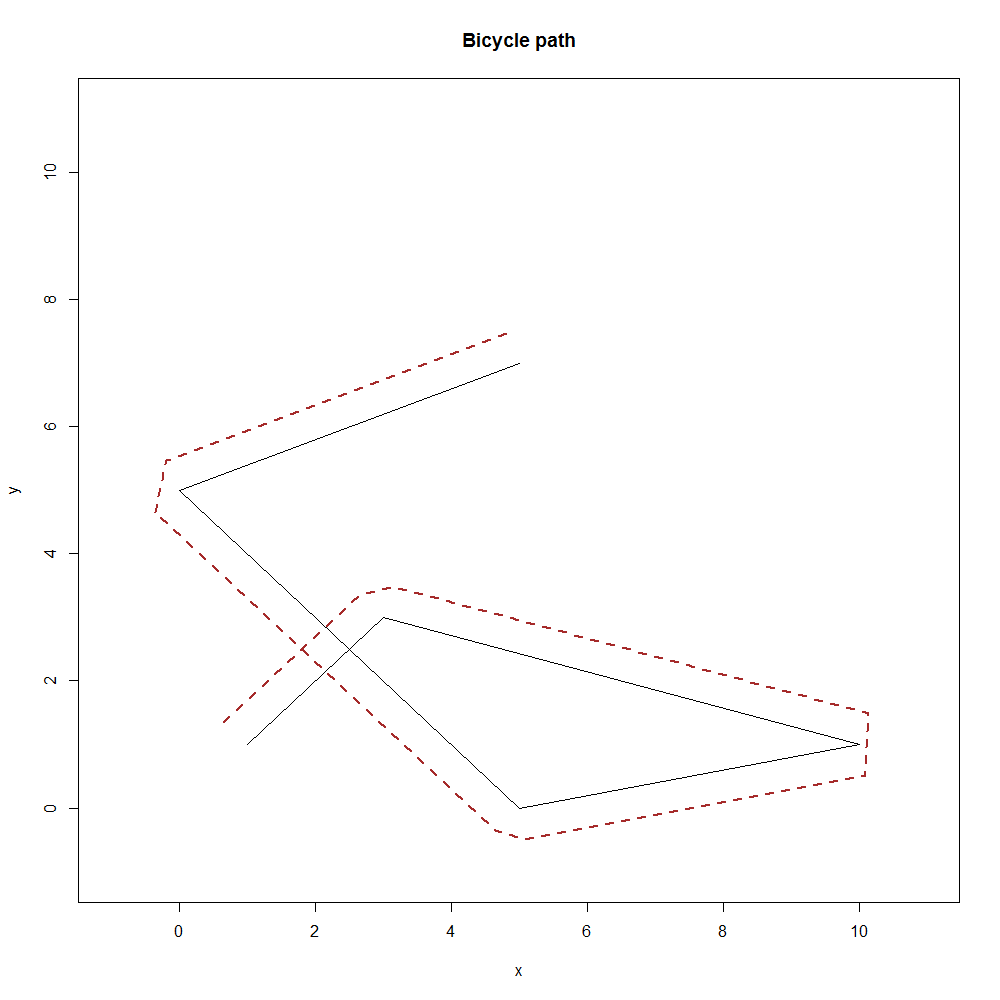I have linestring which represent a driving journey down some streets. But I want to actually represent a cyclists journey, which is offset from the line i.e. they travel near the kerb of the road. I'm struggling with how to do it. I've made a reproducible piece of R code to illustrate.
## Let's say I have a route along some streets.
library(ggplot2)
## It can be described by this
data <- data.frame(x = c(1,3,10,5,0,5),
y = c(1,3,1,0,5,7),
label = c('a', 'b', 'c', 'd', 'e', 'f'))
## Visualised by this
ggplot(data, aes(x, y)) +
geom_path() +
geom_text(aes(label=label),hjust=0, vjust=0)
But what I want to do it model as though someone were cycling. Let's say they cycle 0.5 away from the centre line of the road, to the left but of course 'left' is relative to the direction of the line The start of the journey would actually look something like this Note the 'new_x' and 'new_y' are not mathmatically correct. They're estimations for illustrative purposes.
data <- data.frame(x = c(1,3,10,5,0,5),
y = c(1,3,1,0,5,7),
new_x = c(0.7, 3, 10.5,NA, NA, NA) ,
new_y = c(1.5, 3.5, 1, NA, NA, NA),
label = c('a', 'b', 'c', 'd', 'e', 'f'))
## Visualised by this showing the old line and the new line
ggplot(data, aes(x, y)) +
geom_path() +
geom_text(aes(label=label),hjust=0, vjust=0) +
geom_path(data = data, aes(new_x, new_y), colour='red')
So the question is how do I correctly calculate new_x and new_y to create a continuous line representing a cyclists journey as offset from the centre of the road



